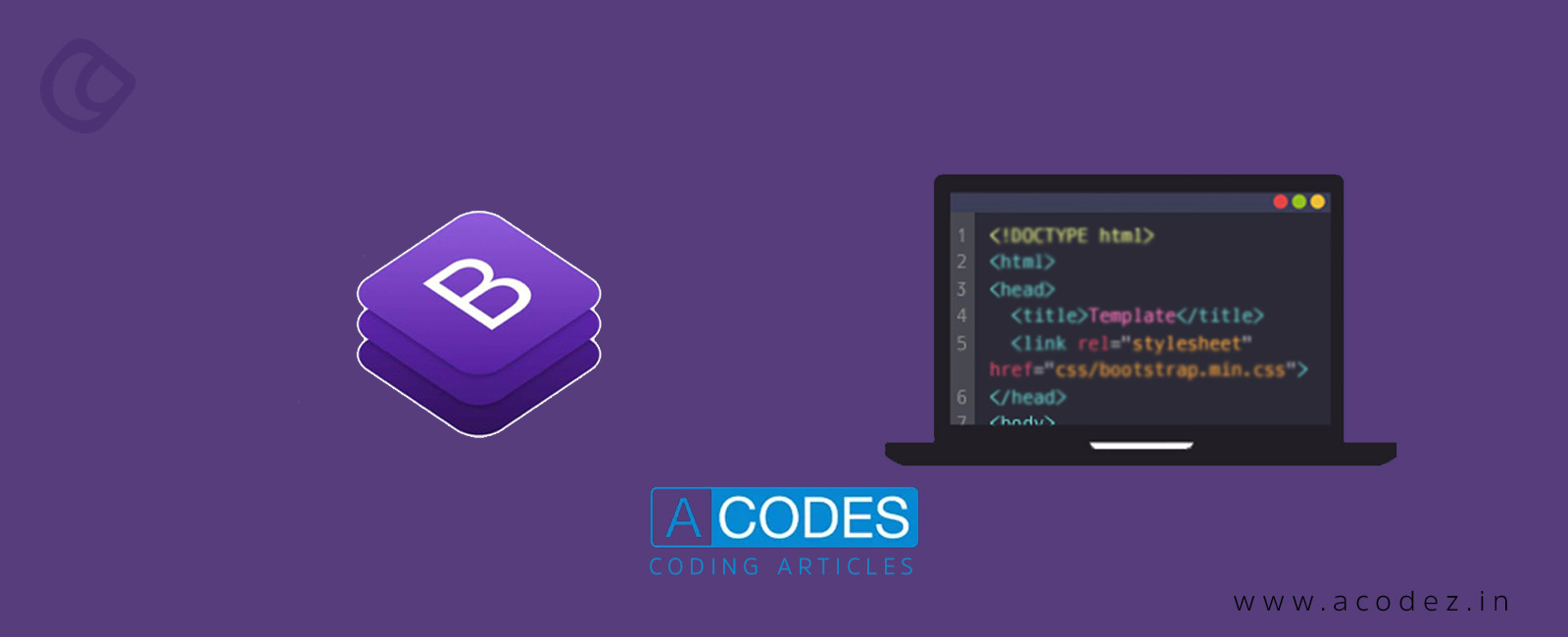During the early days of web development, developers didn’t have to worry much about screen sizes as most monitors had either 640×480, 800×600, or 1024X764 pixels resolutions.
The two main approaches to dealing with screen sizes were either using fixed-width layouts or liquid width layouts.
In the former, the width of an entire webpage was set to a specific value and remained the same as the size of the screen on which it was designed.
Liquid layout flexed depending on the size of the viewer’s browser. While fixed-layout could break if the viewer’s browser wasn’t the same as the design browser, liquid layouts provided more flexibility but weren’t perfect as such.
Their contents could overflow or break on smaller screens and leave lots of white spaces on larger screens. As more screen sizes became available, more approaches on how to solve the downsides of fixed and liquid layouts emerged.
Responsive web design is the latest of these methods and allows web pages to automatically adjust their layout and appearance based on a viewer’s screen properties such as width and resolution.
In this article, we explore Bootstrap which is one of the most popular development frameworks used by approximately 22.2% of all websites.
What is Bootstrap?
In plain terms, bootstrap is a collection of HTML, CSS, and JavaScript code used for front-end development.
Essentially the tool saves you from having to code your website or web application from scratch, giving you more time to build responsive websites.
The free and open-source tool is hosted on Github and available in a precompiled form or as a source code.
The precompiled version is the most basic form that can be quickly used In any web product.
The Source code version has precompiled and minified CSS, JavaScript files, plus documentation.
It is used by designers and developers who would like to customize the code to build versions of Bootstrap specific to their projects.
Precompiled Bootstrap structure
If you download and unzip the precompiled Bootstrap v5 folder you see the following structure:
bootstrap/
├── css/
│ ├── bootstrap-grid.css
│ ├── bootstrap-grid.css.map
│ ├── bootstrap-grid.min.css
│ ├── bootstrap-grid.min.css.map
│ ├── bootstrap-reboot.css
│ ├── bootstrap-reboot.css.map
│ ├── bootstrap-reboot.min.css
│ ├── bootstrap-reboot.min.css.map
│ ├── bootstrap.css
│ ├── bootstrap.css.map
│ ├── bootstrap.min.css
│ └── bootstrap.min.css.map
└── js/
├── bootstrap.bundle.js
├── bootstrap.bundle.js.map
├── bootstrap.bundle.min.js
├── bootstrap.bundle.min.js.map
├── bootstrap.js
├── bootstrap.js.map
├── bootstrap.min.js
└── bootstrap.min.js.map
The above structure includes compiled CSS and JavaScript, compiled and minified CSS and JavaScript, source map, and bundled JavaScript files.
Previous versions of Bootstrap included fonts that can now be easily grabbed from different sources such as Font Awesome.
bootstrap-grid.css is used for responsive layouts and is made up of rows and columns placed inside one or more containers.
bootstrap.css can be used as the main CSS file and can be overwritten in your own style sheet.
The .map files are used by developer tools such as the ones available in Chrome or Firefox to debug code as if it was not compressed.
The bootstrap-reboot.css file is used when you need to make a CSS reset which corrects inconsistencies across target browsers and devices.
You do not have to use all the files in the CSS folder. For instance, if you only need the grid you only include bootstrap-grid.css in all your HTML files and use bootstrap-grid.min.css while deploying your application online.
The Bootstrap Javascript folder in the structure above contains eight files.
The bootstrap.bundle.js file includes popper.js which is used to manage poppers in web apps. bootstrap.js file has many JavaScript libraries for managing things like drop-down menus, carousels, among other powerful functionalities.
Just like in CSS the minified .js files are used when deploying an application online while the .map files are used by developer tools to debug code.
Furthermore, you don’t have to use every JavaScript plugin included in the folder, only choose components needed for specific functionalities.
Bootstrap source code
The framework’s source code includes the following:
bootstrap/
├── dist/
│ ├── css/
│ └── js/
├── docs/
│ └── examples/
├── js/
└── scss/
The dist/ folder has everything outlined in the precompiled section above, the docs/ folder has the source code for the documentation plus examples on how to use the framework, and the js/ and scss/ folders have the source code for CSS and JavaScript respectively.
Using source files enables developers to only use components they are interested in.
Since you only use the styles and components you need the final product is more compact, small, and efficient. This makes your website/web app faster to load.
How to use Bootstrap
Note that a basic understanding of HTML CSS and JavaScript is mandatory for you to comfortably use Bootstrap in any project.
There are three methods that you can to quickly use to add Bootstrap to your project and they include:
Using a free open-source CDN
A content delivery network consists of geographically distributed servers that speedily deliver content. It’s a quick way to serve bootstrap files to a user.
Bootstrap recommends jsDelivr which is an open-source CDN used to serve files directly from GitHub repositories and npm registry.
Some of the advantages of using a CDN includes:
- Improve website loading time since the bootstrap files are loaded from a nearby server based on a user’s geographical location.
- Improved website security since delivering content via CDN offers better protection against DDoS attacks.
- A free open-source CDN such as jsDelivr is used by many websites meaning that a grade percentage off the website traffic will cache bootstrap files in local browsers. This reduces the bandwidth cost plus makes a website even faster.
To use the jsDelivr CDN copy paste the CSS link below to the <head> section of your HTML file.
<link href="https://cdn.jsdelivr.net/npm/bootstrap@5.0.2/dist/css/bootstrap.min.css" rel="stylesheet" integrity="sha384-EVSTQN3/azprG1Anm3QDgpJLIm9Nao0Yz1ztcQTwFspd3yD65VohhpuuCOmLASjC" crossorigin="anonymous">
You can then include bootstrap bundled with popper or place the popper.js files separately before loading your Bootstrap js file in the order shown below to ensure proper functioning.
Whatever option you choose, the JavaScript files are placed before the end of the <body> tag.
<!-- Loading Bootsrap bundled with popper -->
<script src="https://cdn.jsdelivr.net/npm/bootstrap@5.0.2/dist/js/bootstrap.bundle.min.js" integrity="sha384-MrcW6ZMFYlzcLA8Nl+NtUVF0sA7MsXsP1UyJoMp4YLEuNSfAP+JcXn/tWtIaxVXM" crossorigin="anonymous"></script>
<!-- Loading the JS files separately -->
<script src="https://cdn.jsdelivr.net/npm/@popperjs/core@2.9.2/dist/umd/popper.min.js" integrity="sha384-IQsoLXl5PILFhosVNubq5LC7Qb9DXgDA9i+tQ8Zj3iwWAwPtgFTxbJ8NT4GN1R8p" crossorigin="anonymous"></script>
<script src="https://cdn.jsdelivr.net/npm/bootstrap@5.0.2/dist/js/bootstrap.min.js" integrity="sha384-cVKIPhGWiC2Al4u+LWgxfKTRIcfu0JTxR+EQDz/bgldoEyl4H0zUF0QKbrJ0EcQF" crossorigin="anonymous"></script>
Sample HTML template after including CSS and JavaScript
The CSS and js in the section above put together in an HTML template should have pages as one displayed below.
However, if you choose to use any other free or premium bootstrap templates fit for your project, ensure that they meet the latest design standards.
Note that to make websites faster and easier to work with, new themes as the one below using Bootstrap 5 no longer need jQuery.
<!doctype html>
<html lang="en">
<head>
<!-- Required meta tags -->
<meta charset="utf-8">
<meta name="viewport" content="width=device-width, initial-scale=1">
<!-- Bootstrap CSS -->
<link href="https://cdn.jsdelivr.net/npm/bootstrap@5.0.2/dist/css/bootstrap.min.css" rel="stylesheet" integrity="sha384-EVSTQN3/azprG1Anm3QDgpJLIm9Nao0Yz1ztcQTwFspd3yD65VohhpuuCOmLASjC" crossorigin="anonymous">
<title>Hello, world!</title>
</head>
<body>
<h1>Hello, world!</h1>
<!-- Optional JavaScript; choose one of the two! -->
<!-- Option 1: Bootstrap Bundle with Popper -->
<script src="https://cdn.jsdelivr.net/npm/bootstrap@5.0.2/dist/js/bootstrap.bundle.min.js" integrity="sha384-MrcW6ZMFYlzcLA8Nl+NtUVF0sA7MsXsP1UyJoMp4YLEuNSfAP+JcXn/tWtIaxVXM" crossorigin="anonymous"></script>
<!-- Option 2: Separate Popper and Bootstrap JS -->
<!--
<script src="https://cdn.jsdelivr.net/npm/@popperjs/core@2.9.2/dist/umd/popper.min.js" integrity="sha384-IQsoLXl5PILFhosVNubq5LC7Qb9DXgDA9i+tQ8Zj3iwWAwPtgFTxbJ8NT4GN1R8p" crossorigin="anonymous"></script>
<script src="https://cdn.jsdelivr.net/npm/bootstrap@5.0.2/dist/js/bootstrap.min.js" integrity="sha384-cVKIPhGWiC2Al4u+LWgxfKTRIcfu0JTxR+EQDz/bgldoEyl4H0zUF0QKbrJ0EcQF" crossorigin="anonymous"></script>
-->
</body>
</html>
Downloading Bootstrap files locally to your project folder
Instead of using a CDN, you can download Bootstrap from the official website and use it locally on your project.
Once you’ve downloaded the compressed source file, extract the zipped CSS and JavaScript folders then add them to the project folder where you stored your index.html file.
You can then load the CSS and js files as was done under the CDN option but this time by replacing the link’s ahref with the correct file paths in your local hard drive.
Using package managers such as npm and RubyGems
A package manager is a tool that keeps track of software installed on your computer and allows easy installation of new software, upgrades to newer versions, plus removal of previously installed software.
Using package managers such as npm and RubyGems, Bootstrap can be included in any project.
To do so you have to fast initialize the package manager in your project then use the command line to download a local copy of the framework inside your project folder.
You can then include the CSS and js file in the <head> and <body> sections of your index.html file respectively using the approach outlined in the section above.
Why use Boostrap?
Time-saving coding process
While creating a functional and easy-to-navigate website/ web app with an aesthetically appealing UI might seem very easy, so much effort and a lot of patience goes into such a project.
Thanks to bootstrap, developers can build websites and web applications without having to code everything from scratch which saves time.
The framework is customisable
To make a project distinct you only have to be a little bit creative and modify certain elements.
If you are not satisfied with the frameworks design template, you can twerk the CSS file or combine it with the existing stylesheet to give your project a distinct look while still not having to code CSS from scratch.
You can also remove all the plugins and components not required by your project thus rendering the final product faster.
It’s easy to use
With a basic knowledge of HTML, CSS, and js you can easily use Bootstrap without much hassle.
As demonstrated in the How to use Bootstrap section, the installation process is swift and can easily be done by either a beginner or an expert.
Responsive grid system
The increased use of mobile devices with small user interfaces has made it compulsory for websites targeting mobile users to use responsive grid systems.
Being a mobile-friendly framework, bootstrap has a grid system that adjusts to the user’s screen size.
The 12 column system has a series of containers, rows, and columns that adjusts the layout and aligns with the displayed content.
The grid system can adapt all the available six break points that include:
- xs (extra small)
- sm (small)
- md (medium)
- lg (large)
- xl (extra large)
- xxl (extra extra large)
Furthermore, the grid system contains classes but can help you show or hide specific elements on various target devices.
It’s easier to achieve consistency between development
Did you know that bootstrap was developed by a group of Twitter employees with consistency in mind?
The developers wanted to achieve consistency across the company’s web pages and applications thus came up with a tool that eliminates the use of different libraries among developers working on the same project.
No matter who handles a project, Bootstrap is built to ensure consistency.
Furthermore, being a cross-browser-compatible framework means that it reflects the same output across different browsers.
Common mistakes to avoid while using Bootstrap
Thinking that Bootstrap will do everything for you
Despite coming bundled with HTML and CSS templates with multiple user interface components such as forms, tables, navigation, carousels, buttons, and many more, the tool does not do everything for you.
Instead, it provides a set of defaults from which you can pick whatever components required for your project to quickly have a good website/ web app up and running.
Furthermore, it does not in any way limit your creativity as you can twerk it to fit your desired output.
Thinking you don’t need to learn HTML, CSS, and JavaScript
To use Bootstrap you need to have a basic understanding of HTML, CSS, and js.
The framework does not teach you either of the three but only removes lots of tricky parts from your shoulder.
If you’re a newbie the tool should therefore not be used as a shortcut to your learning curve.
On a similar note, despite saving developers on the design bit, you cannot dismiss a designer’s help in building your own design theme when using Bootstrap.
Ignoring the framework’s best practices
A common mistake made by many developers using bootstrap is failure to read the documentation carefully.
By assuming various concepts on their own they thus generate bugs in their project which in turn generate unexpected results.
For example, despite making menu drop-down on hover instead of on click future being left out on Bootstrap as a best practice targeting touch devices;
some developers can insist on including the same feature not knowing it was left out on purpose.
Reading documentation outlining what’s new and what has been improved on the version that you are using for your project helps eliminate such mistakes.
Using everything offered by the framework
While using bootstrap you have to be selective on the features you need for your project.
Do not use everything offered by the framework because it looks nice as your website can be overdone leading to compromised performance.
As a safe practice, you can quickly create your project using HTML and CSS then add the plugins required to achieve specific interactive functionalities one by one.
Conclusion
In summary, Bootstrap is one of the most popular responsive web development frameworks used by approximately 22.2% of all websites.
The tool is a collection of HTML CSS and JavaScript code used for front-end development that comes bundled with multiple components which save developers the effort of having to code websites/ web applications from scratch.
It is free and open-source and available either in pre-compiled form or as a source code. There are three methods that can be used to quickly pull bootstrap into a project.
You can either use a free open source CDN, download the bootstrap files locally to your project folder, or use a package manager such as npm.
Some of the reasons to use bootstrap include its time-saving nature, customizability, responsive grid system, and consistency.
It is important to note that the framework does not do everything for you. Furthermore ignoring best practices and using everything offered by the tool good compromise performance.
We hope that you’ve gained a lot from this piece and invite you to look at our other publications on Bootstrap and other web development topics.
This is an article under Acodes – coding article series from Acodez. You can read more coding articles here: ACodes Series
Acodez is a renowned web development company and web application development company in India. We offer all kinds of web design and Mobile app development services to our clients using the latest technologies. We are also a leading digital marketing company providing SEO, SMM, SEM, Inbound marketing services, etc at affordable prices. For further information, please contact us.
Looking for a good team
for your next project?
Contact us and we'll give you a preliminary free consultation
on the web & mobile strategy that'd suit your needs best.






